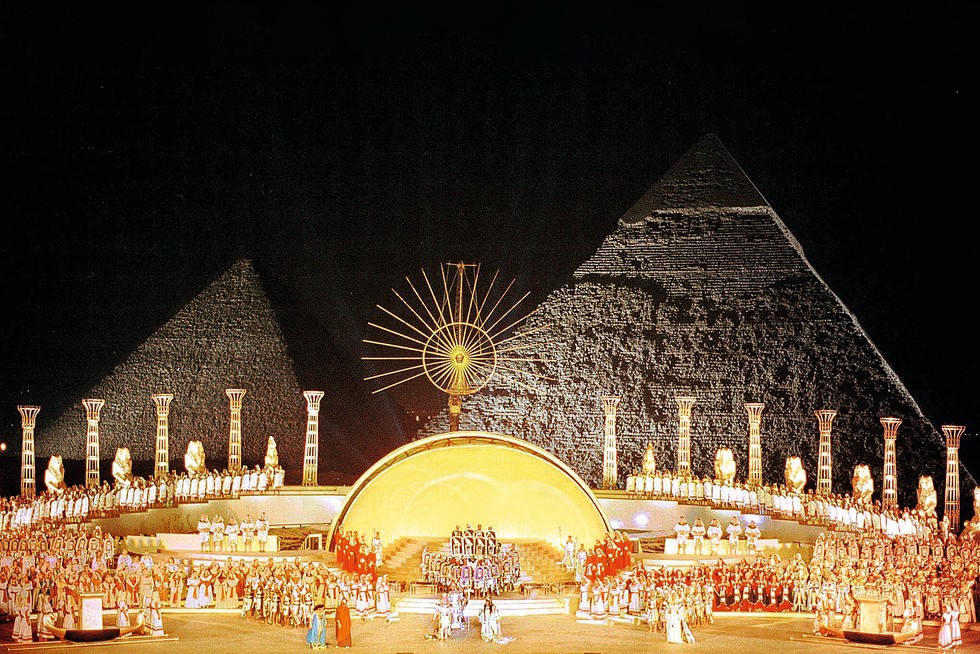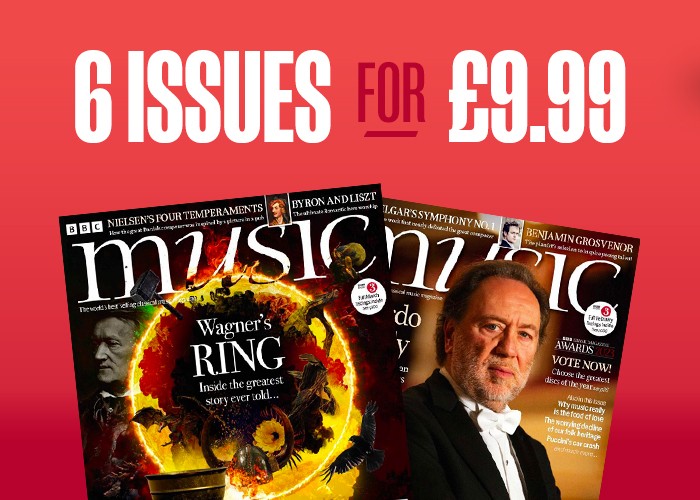Egyptian-inspired music: how the ancient land of pharaohs and gods fascinated composers
With its pharaohs, hieroglyphs, mummies and gods, Egypt has long fascinated composers, keen to capture its unique allure, says Claire Jackson

The pencil-drawn diagrams are meticulous, noting the contents and whereabouts of their author’s discoveries. A map depicts a bird’s eye view of one room, showing a pile of wheels; another shows a series of steps.
The documents – recently displayed at Weston Library in Oxford as part of ‘Tutankhamun: Excavating the Archive’ – describe the discovery of the first known intact royal burial from ancient Egypt that became a world-famous archaeological find.
But long before Howard Carter and co’s 1922 haul, the land of the pharaohs had proved an irresistible draw, with a fascination for the early dynasties frequently translated into music.
How the myths and tales of ancient Egypt have inspired composers for centuries
Biblical connections were a focus for the likes of Handel (Israel in Egypt), Rossini (Moses in Egypt; Moses and Pharaoh) and Anton Rubinstein (Moses), whose works were based on the Old Testament’s deliverance of the Israelites, while the ‘Arabian Dance’ from Grieg’s Peer Gynt Suite No. 2 evokes a historian who visits the Sphinx, and Philip Glass’s 1983 opera Akhnaten explores the titular pharaoh’s monotheism.
Interest in the mysterious world of mummies and hieroglyphs was stirred when merchants began importing curiosities from their travels, generally acquired by dubious means (tomb looting was common until the early 20th century). Collectors such as Giovanni Battista Belzoni (1778-1823) paved the way for Egyptology to become an area of academic study, usually defined as the period from the 5th millennium BC to the 4th century AD.
The dry climate of Egypt supported the survival of ancient musical instruments such as end-blown flutes and pipes played originally with single or double reeds, harps and trumpets, providing evidence of music in this early civilisation. Pythagoras is believed to have investigated musical theory in Egypt before moving to mathematics and Plato is said to have praised its practice of the art form.
Western composers have often approximated these Middle Eastern modal flavours in their interpretations. In his Egyptian March – commissioned for the inauguration of the Suez Canal in 1869 – Johann Strauss II combines the popular polka style with off-beat rhythms and unexpected accidentals.
Saint-Saëns took a similar approach in his ‘Egyptian’ Piano Concerto No. 5 . Composed in 1896 in Cairo during one of his winter jaunts to warmer climes, Saint-Saëns’s work was not strictly observing the music of his surroundings – only the central movement shows any real departure from the Parisian tonalism of the day, with a nod to a Nubian folk song he heard sung by Nile boatmen. As we might expect from the mind that brought us Carnival of the Animals, Saint-Saëns references the chirruping crickets and ribbetting frogs he heard during his stay through a repetitive, delicate figuration in the solo part.
Such Western appropriations vary in terms of taste and reliability. Films like The Egyptian (1954), The Mummy (1999) and, most famously, the Indiana Jones franchise present ancient Egypt with overblown, kitsch colonialist imagery.
One of the more extreme examples is Andrew Lloyd Webber and Tim Rice’s musical Joseph and the Amazing Technicolour Dreamcoat: in the 1999 film (with Donny Osmond in the title role), Egyptian bigwig Potiphar is seen counting his money on a triangular abacus, while his wife – Joan Collins! – appears in a figure-sculpting dress with a Nefertiti-esque headdress. Meanwhile, the pharaoh removes his Tutankhamun death mask to reveal an Elvis quiff, before recounting his dreams in a 1950s rock ‘n’ roll show, layering parody upon parody.
Director Phelim McDermott was keen to avoid such tropes in his 2016 production of Glass’s Akhnaten. Despite a highly inventive staging, the ancient Egypt setting is recreated through sparse, block colour backgrounds and bold oversized costumes.
Anthony Roth Costanzo has sung the title role multiple times, at both the New York Met and English National Opera, where the work is revived again this spring. It has become a career-defining piece for the US countertenor, who not only sings complex music in Egyptian nearly constantly for three hours, but appears on stage naked – and virtually hairless.
‘Someone passed me in the street and said “Oh, there’s Akhnaten”,’ says Costanzo. ‘It does feel like method acting. I don’t always look forward to shaving my head – it has a strange effect of making me feel like an alien in my real life but that I belong when I’m on stage.’
More like this
As the sun king and high priest, Akhnaten would have been depilated; Costanzo’s hair removal is just one aspect of his commitment to the role, which has involved consultation with experts including Richard Bruce Parkinson, professor of Egyptology at Oxford University. ‘I wanted to understand the source material. Of course, if you try to be a facsimile that might not feel authentic, so it was about balancing that,’ says Costanzo. ‘When you have three hours of very repetitive music it is crucial to understand what the characters’ motivations might have been and maintain audience attention.’
Costanzo certainly does that. Over the course of three acts, we follow Akhnaten’s rise to power, his marriage to Nefertiti and their introduction of proto-monotheism centred on the sun god Aten. It’s a performance that is admired by both music fans and, perhaps surprisingly, historians. Last autumn, to coincide with ‘Tutankhamun: Excavating the Archive’, Costanzo was awarded a visiting fellowship at Oxford, where he spoke about Egyptology and opera, and performed pieces linked with the exhibition. ‘The Akhnaten libretto juxtaposes original sources and the audience has to create the story; in basic terms that’s also what an historian does,’ observes Parkinson. ‘That’s where history and art happen, in that space between the evidence.’
The sandy backdrop of Cairo Opera’s 1998 production of Aida took authenticity a step further – the performance took place in the shadow of illuminated Giza pyramids, and a 1987 staging was held outside the 3,000-year-old Temple of Amenhotep III in Luxor. (Very) loosely based on a true story, Verdi’s beloved opera Aida is one of the most famous examples of ancient Egypt in music.
Cairo’s Opera House opened in 1869 with Rigoletto, but archaeologist Auguste Mariette persuaded the Turkish governor of Egypt to commission an ‘Egyptian’ opera about Radamès, who wants to lead the Egyptian army against the invading Ethiopians and be with Aida, a captured Ethiopian princess.
But there’s a catch: the Egyptian princess Amneris is smitten with Radamès, and a complex love triangle ensues. The opera has, of course, been staged and recorded many times, and the Royal Opera House presents a new production in 2023, with Angel Blue as Aida.
With its distinctive culture and captivating geography – the Sahara Desert, Red Sea and Nile River – life in ancient Egypt seems far removed from contemporary concerns. But works such as Aida focus on the social constructs that transcend civilisations – and Akhnaten has an underlying storyline that appeals to modern audiences.
‘He portrayed himself as having feminine characteristics – or perhaps he actually had those characteristics – so he is something of a symbol for gender fluidity,’ explains Costanzo. This is represented musically through the countertenor’s weaving arias, which generally occupy the range roughly comparable with a mezzo-soprano, sometimes arching above the melodies sung by Nefertiti. ‘His otherness has attracted people throughout history,’ adds Parkinson. Akhnaten’s impact is recognised by Glass, who places the Egyptian king alongside Albert Einstein (Einstein on the Beach) and Mahatma Gandhi (Satyagraha), with the opera forming part of a trilogy about individuals driven by convictions that altered history.
There is, of course, always room for artistic licence: Akhnaten – also known as Amenhotep IV – can be spelled ‘Akhenaten’, but Glass chose the version without the second ‘e’ as three syllables are easier to sing than four. His choice in Pharaoh is also up for discussion. ‘For history as written by the ancient Egyptians, Akhenaten actually didn’t have that much impact; after his reign ended, he was written out of history,’ says Parkinson. ‘The real potential of his role as an historical figure came with the rediscovery of the city of el-Amarna, and public awareness increased with the Tutankhamun discovery.’
In short, what’s most interesting about ancient Egypt is our interest in ancient Egypt, a topic subversively explored by English Touring Opera in its 2022 piece Tutankhamun’s Shoes, written by ETO general director Robin Norton-Hale and composer Rosabella Gregory. In this children’s opera, Nefertiti – now an immortal cat – narrates the dual stories of Carter and Tutankhamun, simultaneously teaching young audiences about the roaring twenties and the ancient world – all through music, of course.
Main image © Getty Images
Authors
Journalist Claire Jackson regularly writes for BBC Music Magazine and Opera Now, and the Big Issue. She has also written for Country Life and Pianist, as well as industry titles including Classical Music and International Arts Manager. She is also a former editor of International Piano (2011-15) and Muso (2008-11), an alternative classical music magazine that was distributed throughout conservatoires in the UK and the US.




